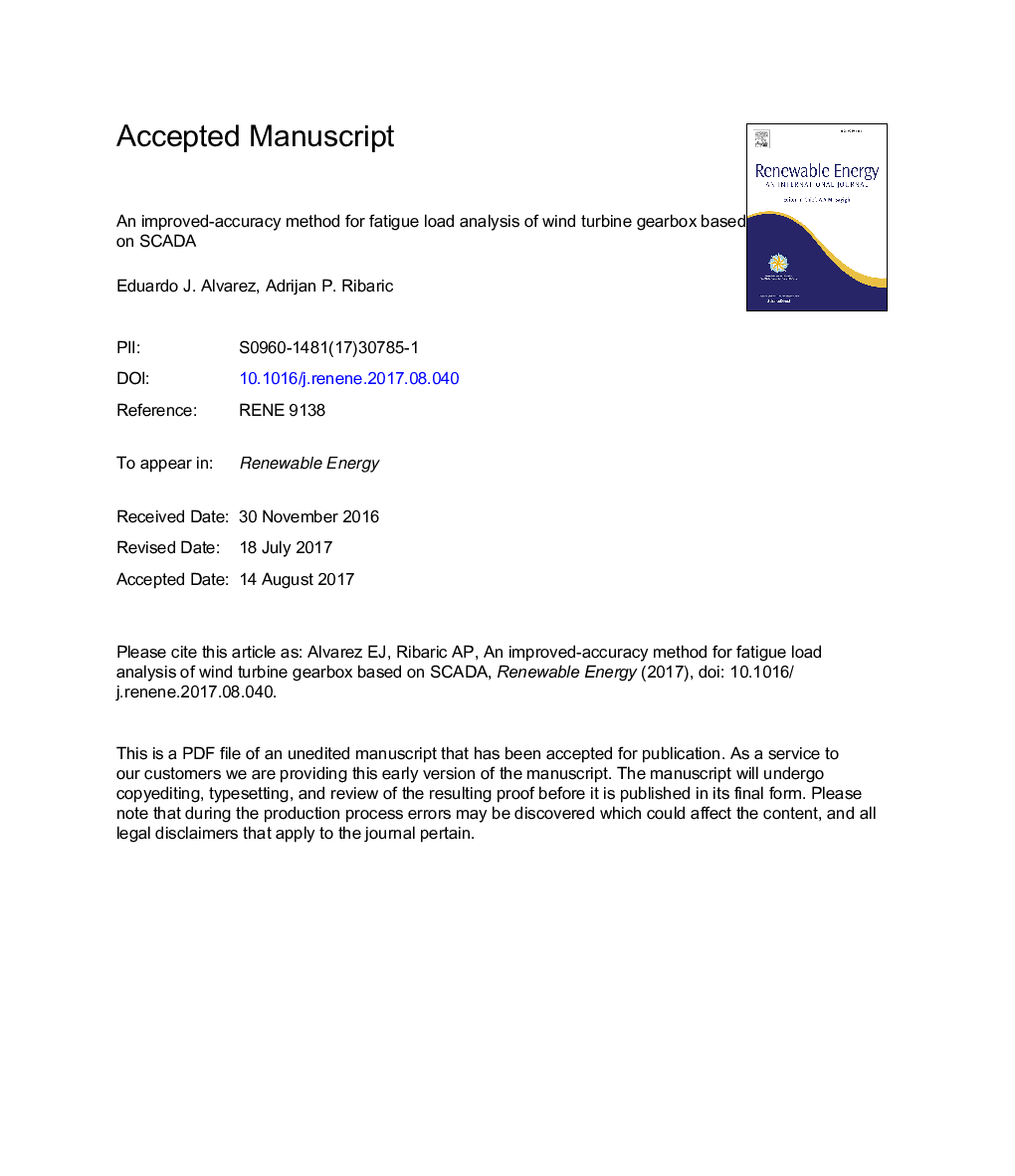| Article ID | Journal | Published Year | Pages | File Type |
|---|---|---|---|---|
| 6765230 | Renewable Energy | 2018 | 15 Pages |
Abstract
In spite of their increasing popularity, managing the use of wind turbines has been exceptionally challenging. Through computational prognostics, Sentient Science determined that current operating lifetime for a large number of turbines is only between five to thirteen years. Initial estimates indicate that savings of $150,000 per turbine per gearbox replacement can be achieved using physics-based long-term prognostics, leading to a substantial return of investment for wind farm operators. However, long-term prognostics require a precise determination of the loads in all six degrees of freedom occurred on the drive-train. One of these loads-torque-can be directly estimated in situ from the historical data provided by the Supervisory Control and Data Acquisition (SCADA) system. In many cases, the historical data only provides 10-min statistical values, and a common practice of reliability analysts is the calculation of torque using only 10-min averages. Disregarding the load fluctuation within 10-min intervals of recorded SCADA introduces a loss of accuracy in the resulting torque histogram that is indeed meaningful for an accurate life prognostic. This paper introduces a novel improved-accuracy method for calculation of torque histograms based on SCADA. Using 10-min distributions of power output and rotor speed, this method is able to successfully reconstruct the distribution of instantaneous torque in between 10-min intervals of recorded SCADA. The method predicts a high-torque region more dispersed that the current method used in the industry, which introduces substantially different results when used in life prognostics. Using this method in the lifing of a GE 1.5 SLE wind turbine, it is shown that the error in predicted L50 is reduced by 10.1%.
Keywords
Related Topics
Physical Sciences and Engineering
Energy
Renewable Energy, Sustainability and the Environment
Authors
Eduardo J. Alvarez, Adrijan P. Ribaric,
